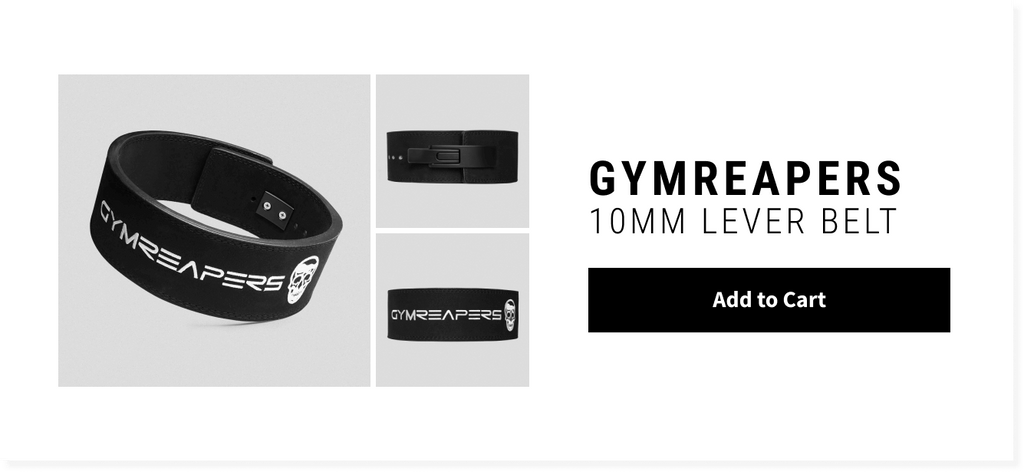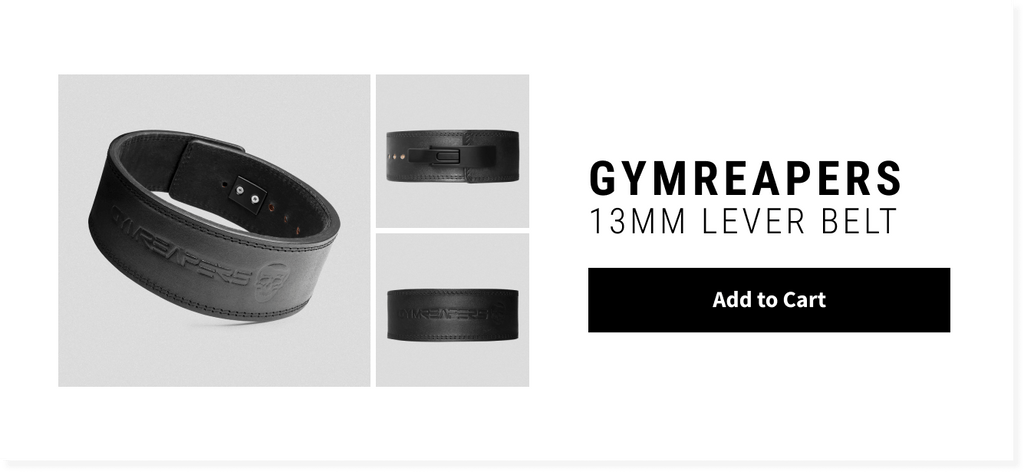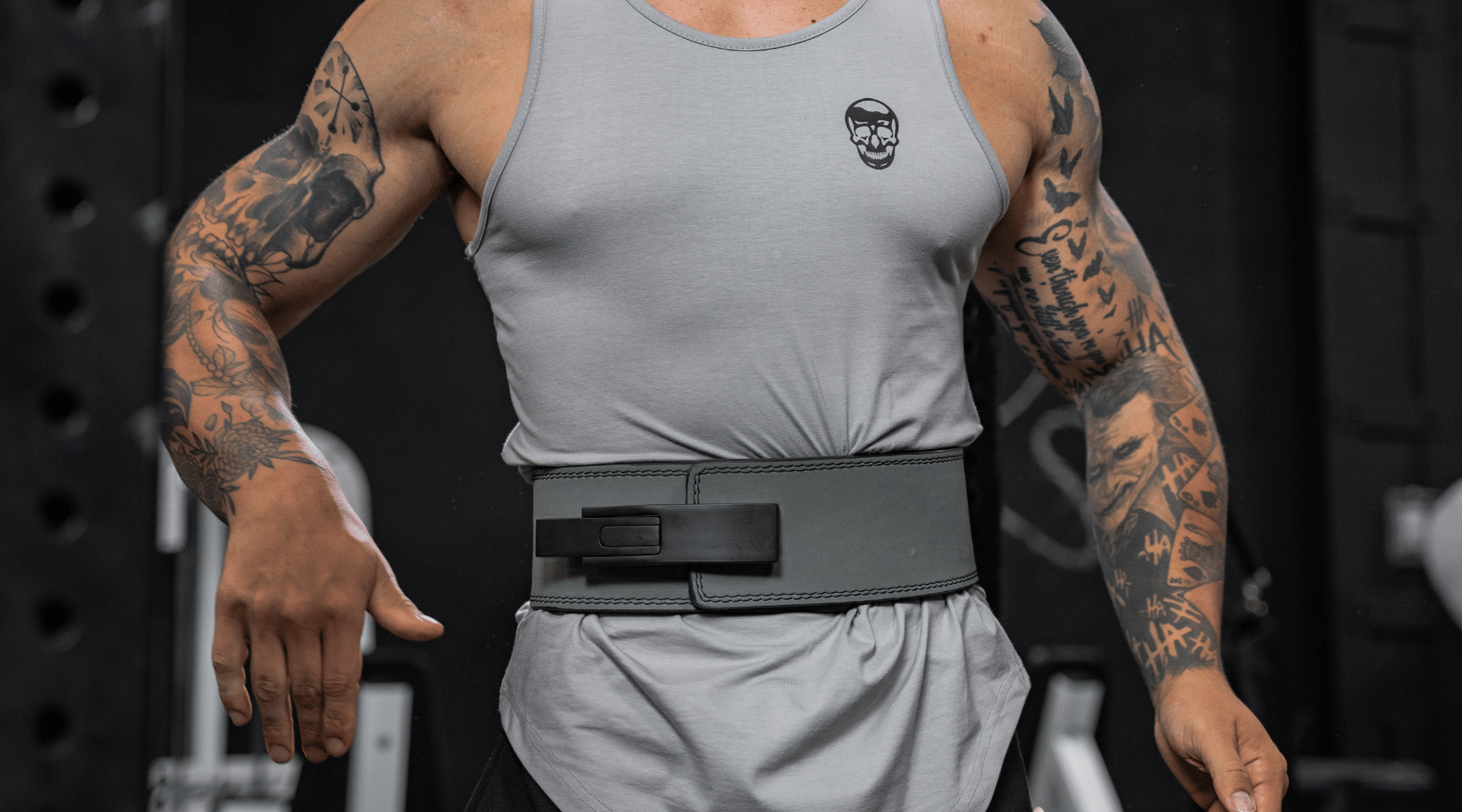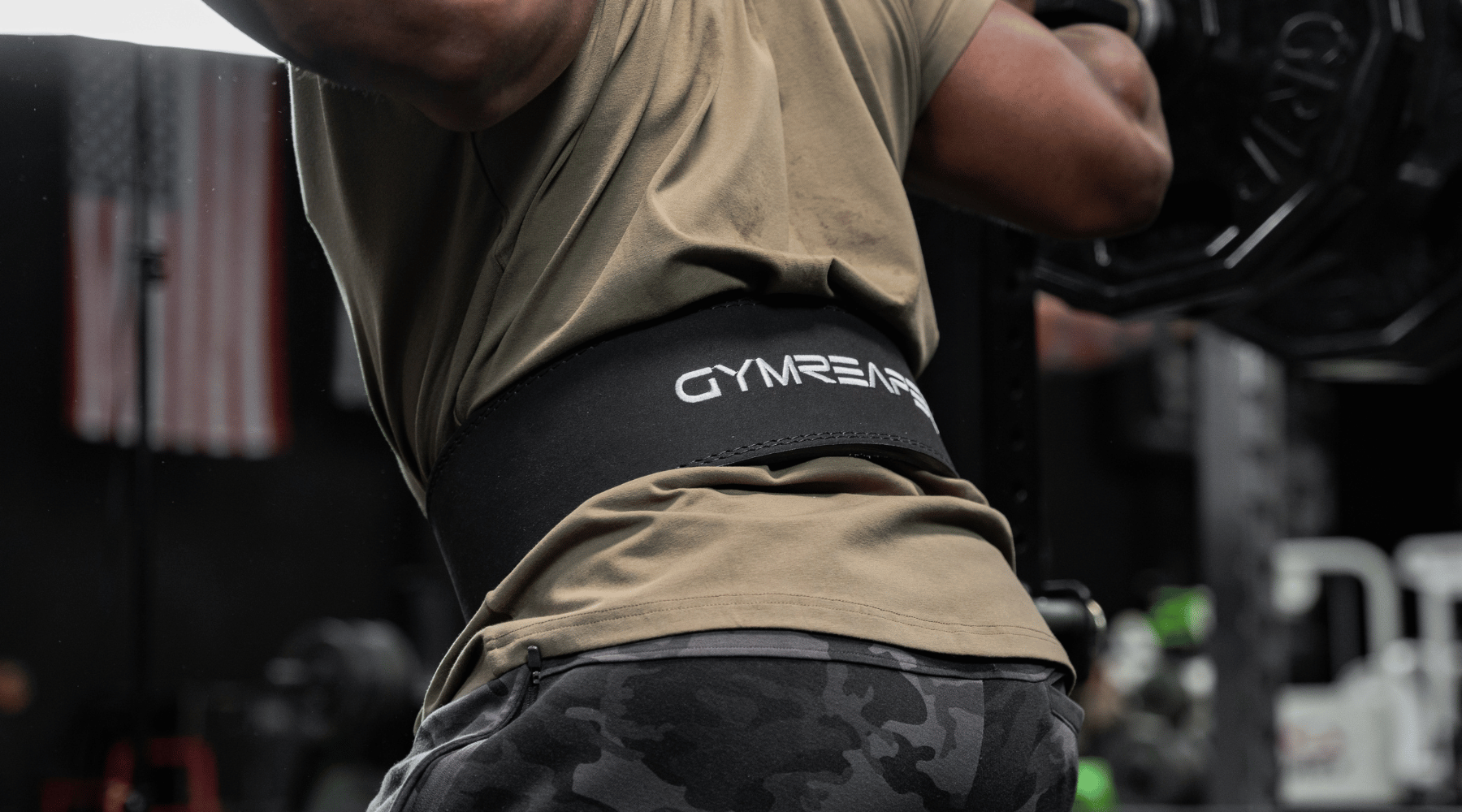Choosing the appropriate thickness of lifting belt is key and is dependent on the strength, experience, and body size of the individual lifter.
Most lifters should opt for a 10mm lifting belt, as it offers excellent support yet is still versatile enough to be worn for a variety of movements. A 13mm lifting belt is a highly specialized belt specifically designed for elite competitive powerlifters who need the highest levels of support, or for individuals who are bigger in size (230lbs+).
If you are a lifter looking for answers on whether or not you need a 10mm or 13mm lifting belt, then below I'll cover all of the details to consider.

What Is A 10mm Belt?
A 10mm lever belt is one of the more common and widely used lifting belts on the market, with most major brands offering a 10mm belt. They offer both stability and versatility.
These belts measure 10mm in thickness, and are typically constructed of leather. These can be a straight fit belt (same width all the way around), or also can come in a tapered fit (wider in the back and tapers smaller on the front). The 10mm belt can come in both prong and lever attachment styles.
What Is A 13mm Belt?
A 13mm lever belt is a thicker lifting belt, and is often used by advanced powerlifters who also are in a heavier weight class.
These belts are very rigid, and can be tough to find. The 13mm belt is typically reserved for lifters who are lifting weights that are 2-3X their bodyweight, with loads exceeding 500 lbs and are in need of an extra rigid belt.
Note: All 10mm and 13mm leather Gymreaper belts are IPF approved belts.
Related Article: Exercises You Should (& Shouldn't) Use a Weightlifting Belt
10mm vs 13mm Lifting Belt: 5 Differences

Below are a 5 key differences between 10mm and 13mm lifting belts.
1. Price
10mm lifting belts are typically less expensive than 13mm belts, as they do not require as much leather and material.
Additionally, 10mm lifting belts are more widely offered, making the consumer have more choices to choose from.
Related Article: How Much Do Lifting Belts Cost? We Breakdown Popular Brands
2. Versatility
10mm lifting belts offer more versatility than a 13mm belt.
For most lifters, a 10mm belt will provide more than enough support and rigidity. In some cases, a 13mm belt may be needed if the demands of the movement require extreme levels of support (however this is rare for most recreational lifters).
3. Availability
10mm lifting belts are a common belt thickness offered by most belt manufacturers. 13mm belts can be difficult to find and are not offered by most manufacturers (Gymreapers offer both thicknesses).
The availability of the 10mm belt makes it a good choice for most lifters looking for a versatile and affordable weightlifting belt.
4. Experience Level
Most lifters will find that a 10mm lifting belt offers more than enough support and rigidity for squats, deadlifts, and all other compound movements. 13mm belts are typically reserved for advanced powerlifters who are also in heavier weight classes.
The 10mm belt is a recommended thickness for most beginners, intermediate, and advanced lifters. More advanced lifters who are also in heavier weight classes may desire a 13mm belt for extra heavy lift attempts, however many heavier lifters still opt for a 10mm.
Most lifters who purchase a 13mm belt have already been using a 10mm belt for many years beforehand.
5. Break-In Time
10mm lifting belts typically have less of a break in period than a 13mm belt, simply due to the belt being less thick.
Breaking in leather belts is something that takes time, but when done properly it can fit snug, offer support, and be comfortable (as comfortable as thick belts can be). If comfort is something you are concentrating on, then opt for a 10mm lifting belt.
Pros & Cons: 10mm vs 13mm Belts

Below are pros and cons of both 10mm and 13mm belts that lifters of all levels should be aware of before deciding on which belt thickness is best for them.
10mm Pros
Offers Support and Versatility: 10mm lifting belts offer a good amount of support for beginners, intermediates, and even advanced level lifters. They can be worn on squats and deadlifts, but also are great for bent over rows, Romanian deadlift, and overhead presses.
More Affordable than Extra Thick Belts: A quality leather belt is worth its price, as it can last for decades if taken care of. 10mm belts offer you a great, high quality belt that is affordable.
10mm Cons
May Not Offer Extreme Levels of Support for Highly Advanced Lifters: In very specific situations, a 10mm lifting belt may not provide enough support for extremely heavy lifts. This really only applies to elite level, highly advanced heavyweight competitive lifters who are moving 2-3 times their body weight.
13mm Pros
Offers Superior Support for Highly Advanced Lifters: The 13mm lifting belt offers the utmost support during extremely heavy squats and deadlifts. This is key for super heavy weight lifters who are looking for the slightest edge to allow them to move 2-3x or more of their bodyweight.
13mm Cons
Can Be Too Rigid for Smaller and Less Experienced Lifters: 13mm lifting belts are very thick, and with that rigidity comes a loss of flexibility and versatility. Additionally, extra thick belts require skill to wear and are typically reserved for elite level lifters (who are also in the super heavy weight classes).
Not All of Them are IPF Approved: Not all 13mm lifting belts are appropriate for competition, as the IPF and USAPL require you to use certain brands and fastener types. Gymreapers 13mm lever belts are approved for IPF, IPL, USPA, and USAPL competitions.
10mm vs 13mm Lifting Belt Examples

Below are three of the best lifting belts you can choose when shopping for a new 10mm or 13mm lifting belt..
Best 10mm Lifting Belts
- Prong Style - 10mm Single Prong Belt
-
Lever Style - 10mm Lever Belt
Best 13mm Lifting Belts
-
Lever Style - 13mm Single Lever Belt
Should You Get A 10mm or 13mm Belt
Below we help you determine if you should get a 10mm or 13mm belt based on your lifting level and experience.
Get a 10mm Belt If:
If you are a beginner lifter, first time belt owner, or advanced lifter (not in a super heavyweight class), a 10mm belt is best for nearly every situation.
A 10mm belt can be worn for squats and deadlifts, but also offers versatility when benching, doing Romanian deadlifts, bent over rows, and other exercises where you may want extra support.
Get a 13mm Belt If:
For extremely advanced lifters, who are also in the super heavyweight category (120kg+), a 13mm belt may be helpful when you are squatting and deadlifting more than 2-3x your bodyweight.
That said, many elite level super heavy weight lifters still opt for a 10mm belt as it offers good support and can be used on other lifts as well. Only get a 13mm belt if you’ve previously worn and competed with a 10mm belt.
If You Have A 10mm Belt, Should You Upgrade To A 13mm Belt?
If you are someone who already has a 10mm belt and are curious whether or not you should buy a 13mm belt, the short answer is: PROBABLY NOT.
There is a strong chance that you do not need to upgrade to a 13mm belt unless you are lifting double if not triple your bodyweight and you are a competitive super heavyweight lifter and need extra support.
The majority of lifters will find the 10mm belt offers excellent support, versatility, and meets all of the demands of their training. An excellent belt choice would be the Gymreapers 10mm Leather belt, which comes in either a prong or lever style.
If you are looking for a 13mm belt, and are a competitive, elite level heavier weight class lifter, you should consider the Gymreapers 13mm leather lever belt.
If you are looking for a more flexible belt, you could also look at the 7mm leather weightlifting belt, which offers a tapered cut to allow great flexibility in deep squats, cleans, and snatches.
Related Article: 7 Types of Lifting Belts (Explaining the Pros, Cons, & Which is Best)
Frequently Asked Questions
How Do You Break In A Lifting Belt?
You will want to start to wear it on a regular basis on heavier lifts. You can also start to wear it during warm ups to practice how to properly breathe with the belt on.
Once you break the belt in, you will be able to get support from it however it will be more comfortable when wearing.
What Size Lifting Belt Is Best For Beginners?
The best size lifting belt for most beginners is a 10mm belt, as it is cost effective, provides great stability, and is versatile enough to wear for other movements than just squats and deadlifts.
If you are looking for a more flexible leather belt, you could also opt for a 7mm tapered weightlifting belt.
What Is The Best Belt Thickness For Powerlifting?
Most lifters will want to use a 10mm lifting belt, as it provides enough support and stability yet is not too thick to impede movement.
Are 13mm Belts IPF Approved?
Yes, however not ALL 13mm belts are, so you need to be careful when selecting your belt.
Are There Thinner Belts Than 10mm?
Belts come in thinner styles, with 7mm leather belts being a popular choice for weightlifters looking for good support and flexibility, especially when doing movements like snatches, cleans, and deep squats.
Non-leather belts also come in thinner sizes, such as the quick release nylon belt which is great for general training and fitness.
Can You Lift More With A 13mm Belt?
A thicker belt could potentially help you lift more as it offers you more support, but only if you’ve mastered the technique of how to “brace” properly against a belt, and if you are already an experienced powerlifter.















Leave a comment
All comments are moderated before being published.
This site is protected by hCaptcha and the hCaptcha Privacy Policy and Terms of Service apply.